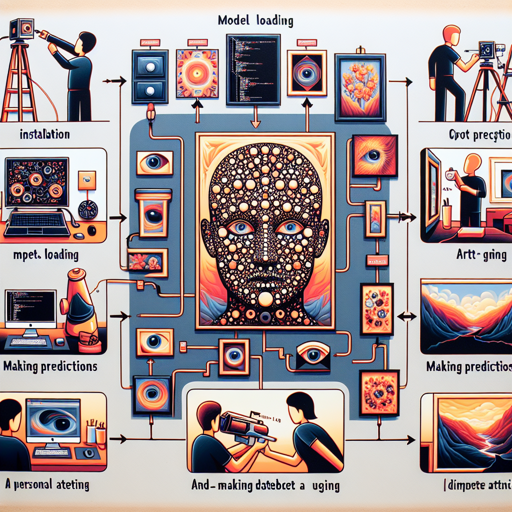Welcome to the fascinating world of computer vision! In this article, we will take a deep dive into how to use YOLOv5 (You Only Look Once Version 5), a powerful model for object detection. This guide will walk you through the installation process, model loading, image prediction, and even fine-tuning the model on your own dataset.
Step 1: Installing YOLOv5
The first step is to install the YOLOv5 package. Open your terminal and run the following command:
pip install -U yolov5Step 2: Load the Model and Perform Predictions
Once installed, you can load the YOLOv5 model and make predictions on images. Let’s break this down with a fun analogy:
Imagine you are an art curator (the model), and you have a collection of paintings (the images) from different artists (the objects). Just like you would evaluate each painting based on its features—style, colors, and themes—the YOLOv5 model evaluates every pixel to ‘detect’ the objects in the image.
Code for Loading Model and Making Predictions
Here’s how you can load the model and perform predictions:
import yolov5
# Load model
model = yolov5.load('fcakyonyolov5n-v7.0')
# Set model parameters
model.conf = 0.25 # NMS confidence threshold
model.iou = 0.45 # NMS IoU threshold
model.agnostic = False # NMS class-agnostic
model.multi_label = False # NMS multiple labels per box
model.max_det = 1000 # Maximum number of detections per image
# Set image URL
img = 'https://github.com/ultralytics/yolov5/raw/master/data/images/zidane.jpg'
# Perform inference
results = model(img)
# Inference with larger input size
results = model(img, size=640)
# Inference with test time augmentation
results = model(img, augment=True)
# Parse results
predictions = results.pred[0]
boxes = predictions[:, :4] # x1, y1, x2, y2
scores = predictions[:, 4]
categories = predictions[:, 5]
# Show detection bounding boxes on image
results.show()
# Save results into results folder
results.save(save_dir=results)This code effectively sets up the YOLOv5 model to process an image and detect various objects within it.
Step 3: Fine-tuning the Model
If you want to customize the model for your specific use case, you can fine-tune it on your own dataset. Here’s how you can do that:
!yolov5 train --img 640 --batch 16 --weights fcakyonyolov5n-v7.0 --epochs 10 --device cuda:0This command specifies the training parameters, such as image size, batch size, weights to use, number of epochs, and the device for training.
Troubleshooting Tips
While using YOLOv5, you might encounter a few hiccups. Here are some common troubleshooting tips:
- ModuleNotFoundError: If you encounter this error, ensure that YOLOv5 is correctly installed. Re-run the installation command.
- CUDA Error: Check if your machine supports CUDA and that the correct version is installed. If using CPU, set the device parameter to “cpu”.
- Image Not Found: Make sure that the image URL is accessible. Test the URL in a browser to confirm.
For more insights, updates, or to collaborate on AI development projects, stay connected with fxis.ai.
Conclusion
Congratulations! You are now equipped with the knowledge to implement and fine-tune YOLOv5 for object detection. Embrace your role as an AI curator and watch as your program uncovers the hidden treasures within images.
At fxis.ai, we believe that such advancements are crucial for the future of AI, as they enable more comprehensive and effective solutions. Our team is continually exploring new methodologies to push the envelope in artificial intelligence, ensuring that our clients benefit from the latest technological innovations.

